Oakley.
I’m not talking sunglasses here. I’m talking Wild West legend Annie Oakley, famous for being able to shoot a lot of things very quickly, without missing too many shots. She was a nationally-renowned trick shooter, firing her rifle upside down and backwards dozens of times in succession, in the days when hearing protection was only just invented.
Annie and other trick shooters of the time were living large as the Wild West was closing up shop. According to the Census Bureau of the time, the frontier closed resoundingly in 1890. The Wild West was, according to the numbers, decidedly less Wild. Its former role as the release valve of America, a place where settlers could start over or start fresh, was coming to an end.
And far be it from its inhabitants to reminisce about the Wild years for entertainment.
For our entertainment, however, we’ll be looking at the sort of post-Wild-West feats that could earn you critical acclaim on the vaudeville stage and in towns across America.
Contrary to modern shooting competitions, the purpose was not to achieve the most minute precision. You didn’t have to put 10 shots through one hole - mostly because the audience in the stands wouldn’t be able to see them a great distance away. Instead, the goal was simple. Hit as many breakable things as possible - and bonus if they were in motion. Even more impressive if you could keep hitting targets for a whole day.
The most popular cartridges for these trick shooters were the old .22 Short, invented in 1857, and eventually the .22 Long Rifle, released in 1884. The targets they were up against were bottles and glass balls.
Let’s see what made these shooters famous.
We’ll start with Buffalo Bill himself. Though later famous as the leader of a Cowboy Circus bearing his moniker, he made his living hunting buffalo. During an 18-month contract with the Kansas-Pacific Railroad, Bill Cody brought in 5000 buffalo with his Springfield Model 1866. Later, he added some Winchester 1873s to his trick-shooting collection, fueled by his specialty .44-40 load with half powder and low-quantity birdshot.

Though he was renowned for his marksmanship, he only engaged in a single challenge match against another marksman. For the event, Cody and the other shooter would take a shot at a target, then race back to the bar for two fingers of liquor. I’m not certain how many targets they got through. It was as much a drinking competition as it was about shooting, and each man claimed to have won a different portion of it.
The world of rifle shooting exhibitions really took off in 1874 when the Irish Rifle Team took on the U.S. team at Creedmoor. Thousands flocked to see the event, and it was covered by leading newspapers and well-illustrated in Harper’s Monthly. Before too long, multitudes of rifle shooters had joined the vaudeville circuit, all claiming to be the World Champion Rifle Shooter. Within a decade, some true world champs would take the stage - often in Buffalo Bill Cody’s Wild West show.
In 1883, a fellow by the name of Dr. A. H. Ruth shot at 1000 hand-thrown glass balls with his .22 Repeating Rifle. He managed to take 984 of those balls out of the air before they hit the ground. Each ball was thrown by hand or catapult, arcing to a point 35 feet up and 35 feet away from the shooter, as was custom. In contrast to modern skeet shooting, the shooter didn’t have to contend with changing directions or elevations. The ball would soar along the same path each time, in a direct line away from the shooter.
Another doctor, though this time a dentist, made his own attempt at world-record endurace shooting. Dr. W. F. Carver shot for 10 or 11 hours a day, six days in a row, at a steady stream of glass balls. In 1886, he achieved his best score - 59,340 hits on 60,000 glass balls. That’s a 98.9% hit rate. He also set the standards for endurance trick shooting, including the basic rules of target size, distance, motion, and how to certify your results. For the record, his glass balls were 2 ½” across.

Trying not to be outdone, a fellow named Captain Bartlett upped the ante. He changed targets to glass balls 2 ¼” inches in diameter, a quarter inch smaller than Carver’s balls. Bartlett managed 59,720 hits out of 60,000 shots - a 99.5% hit rate, and no doubt a high cost for his targets.
I would be remiss if I didn’t mention “Little Miss Sure Shot,” otherwise known as Annie Oakley. She was famous before she joined Buffalo Bill’s western circus, and became even more so during her career there. Let’s be clear - this woman was so famous that she was the star of the 11th commercial film ever made, shown on Edison’s Kinetoscopes under the title, “The Little Sure Shot of the Wild West, an exhibition of rifle shooting at glass balls, etc.”
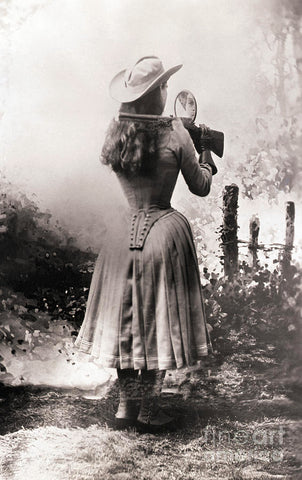
Though Annie was not as well known for these feats of endurance, she had other impressive shooting skills to show. One popular trick involved splitting a playing card at 30 yards, when it was held with the edge towards her. With precision as fine as the width of the bullet, I’m sure she could give the modern olympic air rifle team a run for their medals.
Alternatively, she might put one or more holes through playing cards tossed through the air. For a little challenge, she might shoot a flying dime instead. Of course, her most photographed trick involved shooting targets while aiming backward over a shoulder through a mirror.

What made this even more impressive was her love for factory-stock firearms. Aside from the occasional engraving and pearl grips, her firearms were simple workhorses.
And just to clear things up - her nickname as “Little Miss Sure Shot” was both a marketing ploy and an honorific. Annie met and worked with Sitting Bull at Buffalo Bill’s circus. They soon developed a great deal of admiration and respect for each other, leading Sitting Bull to symbolically adopt her in 1884. Upon her adoption, he gave her the name “Little Sure Shot.” The “miss” was added later.
Let’s move back a bit before we move forward. In 1880, a young Ad Topperwein was living in Texas. He had the chance to see Doc Carver perform with his rifle, and knew immediately what he wanted to do with his life. If you hadn’t guessed, his dream was to become the best trick shooter the world had ever seen, surpassing both Carver and Bartlett. By age 16, he could duplicate many of Carver’s shots. Within a few years, he was living as a cartoonist for a local newspaper, supplementing his income with various trick shooting exhibitions.
An opera house owner and vaudeville manager by the name of George Walker happened to see him shooting. In 1898, he convinced Ad to travel to New York and join the vaudeville scene of the time. After meeting with managers, sportsmen, and writers, Ad was convinced to go to Coney Island to show off at their shooting galleries. Coney Island had dozens of shooting galleries at the time, where visitors could shoot a .22 caliber Winchester Model 1890 at targets up to 30 feet away. If you rang the ¾” bullseye, you were given a 10 cent cigar as a prize. Ad didn’t smoke, but he did like to ring the bullseye. As he was given more and more cigar prizes, he started passing them out to the crowd. Soon, the crowd grew. Before too long, Ad had run the first gallery dry and broken every target they had. Naturally, he moved on to the second shooting gallery, still ringing bullseyes and passing his prizes out to the growing crowd. He never did manage to clean out all the galleries, as the remaining few shuttered up before he could reach them. His shooting career had finally begun.
He had another unique trick up his sleeve, ready to wow spectators. Using hundreds of rounds, he would draw shapes with his bullet holes. He took great delight in crafting stars, his initials, and even a Native American chief’s head with full feathered regalia. While his accuracy was second to none, it was his .22 caliber cartooning that earned him immortal fame.
Among his other impressive tricks, he’d toss a .32-30 cartridge in the air and shoot the bullet out of the case. Otherwise, he might eject a spent case into the air, spin the rifle a bit, then shoot the case before it hit the ground. To embarrass a heckler, he once shot the wings off a bee that happened to be in the wrong place at the wrong time.
Within 2 years, Winchester Repeating Arms Company had hired him on as an exhibitor. While touring the Winchester Factory, Ad would meet his future wife, Elizabeth Servaty. Ad began teaching her to shoot, and she soon turned out to be as good a shot as he was. During practice, she described the sound of bullets hitting cans as “plinking.” Forever after, such practice would be known as plinking, and her nickname became “Plinky Topperwein.” The word “plink” or “plinking” was even added to Webster’s dictionary in 1916, meaning “to shoot at random targets in an informal and noncompetitive manner”.

She toured with Ad, shooting cigarettes out of his mouth, buttons off his jacket, and pieces of chalk from between his fingers. In my estimation, it’s a good thing that they had a happy marriage. She commonly shot with a Winchester Model 3 or a Winchester Model 97 Trap gun, with which she went on to set many speed shooting records. In one of her more famous endurance runs from 1906, she broke 1952 targets out of 2000 in a little over 3 hours, not counting time waiting for the targets to be changed. At the time, this was the world record for both men and women for this sort of shotgun speed shooting. Most of the men taking part couldn’t even fire a shotgun for such a prolonged duration.
In 1907, Ad Topp was finally ready to fulfill the promise he’d made while watching Doc Carver shoot all those years ago. Shooting for 7 hours a day, 10 days straight, he used three Model 3 Winchesters in .22, changing rifles every 500 shots due to the heat of the barrel. He missed only nine thrown targets out of 72,500. His last shot of the event hit the wooden target in the middle and split it cleanly in half, at which point both he and the target fell to the ground. He had used up all the ammunition he had brought, as well as all the .22 rounds that could be purchased in town. In later statements, he remarked that he would have gone for an even 75,000, except that there was no more ammo to be found.
As the Wild West slowly changed into the Midwest and Southwest of the nation, the vaudeville scene was alight with gunslingers claiming to be the best. To wow the audiences and earn some notoriety, these trigger-tapping top gunners fired relentlessly at tiny targets tumbling through the air. Though it’s unlikely that we’ll see many shows like Buffalo Bill’s in the modern age, it’s fun to look back and marvel at just how much ammo they were willing to expend in the name of fame.
I will leave you here with this quote, appearing in an article called “The Fabulous Toepperweins”, by Dick Baldwin. “Clay pigeons - wooden blocks - composition balls - metal discs - marbles, etc; even apples, oranges, real hen eggs - all are shattered with different types of guns. Sometimes two- three -four-and even five targets are in the air at the same time, only to be broken before they fall back to mother earth."
--
We hope you’ve enjoyed this look into the world of firearms. If you’d like to view this in a different format, it’s available in other convenient locations. If you’d like to hear the podcast, you can find it at The Bullet:In. For the video version, take a peek on our YouTube or view the video down below.
Looking for other fancy rifle shooting of the era? Take a peek at the 2-mile tests in 1879!

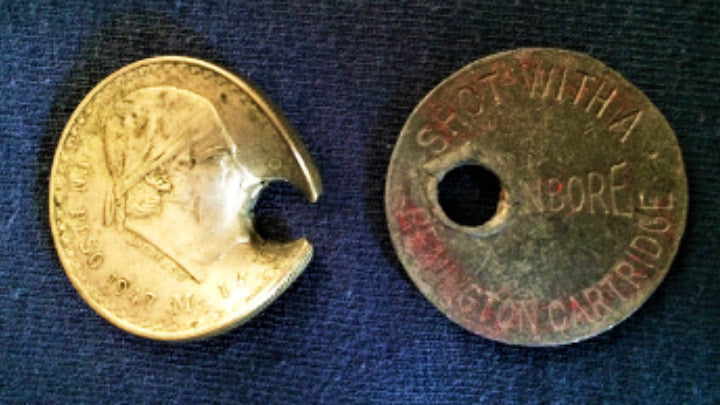
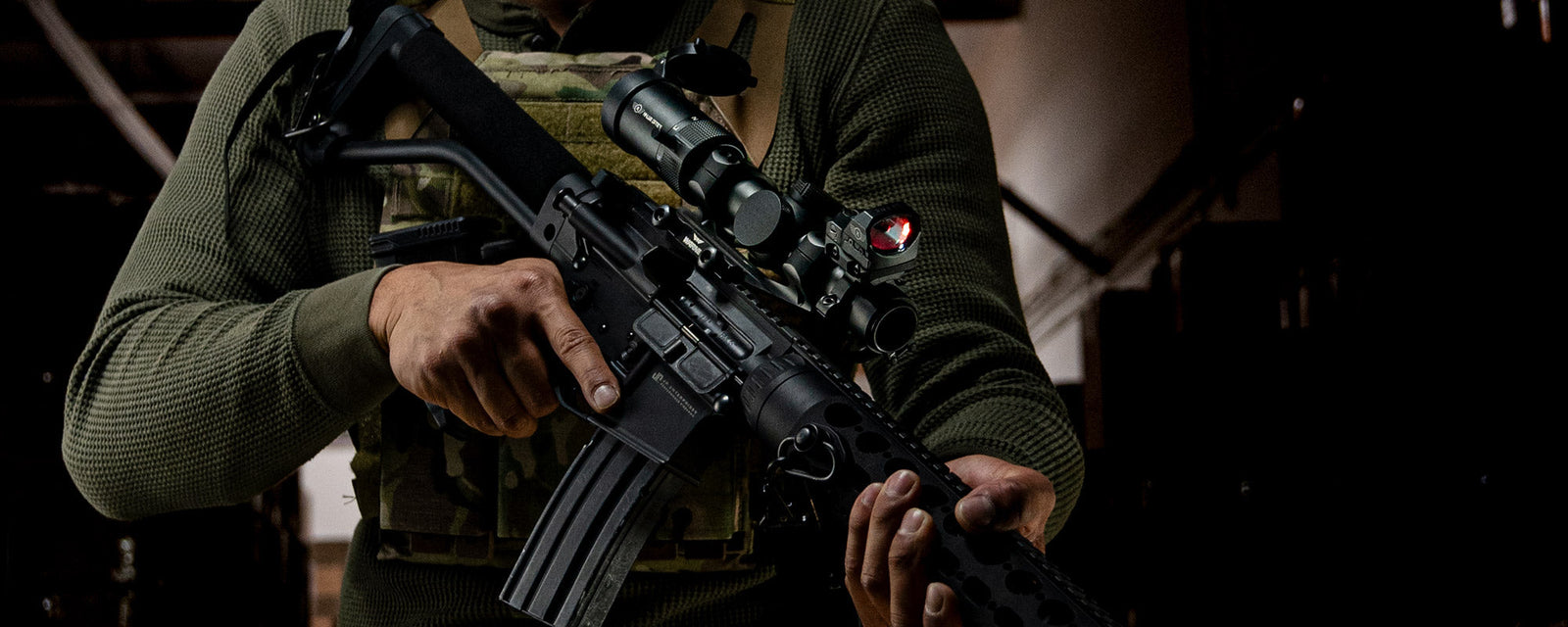
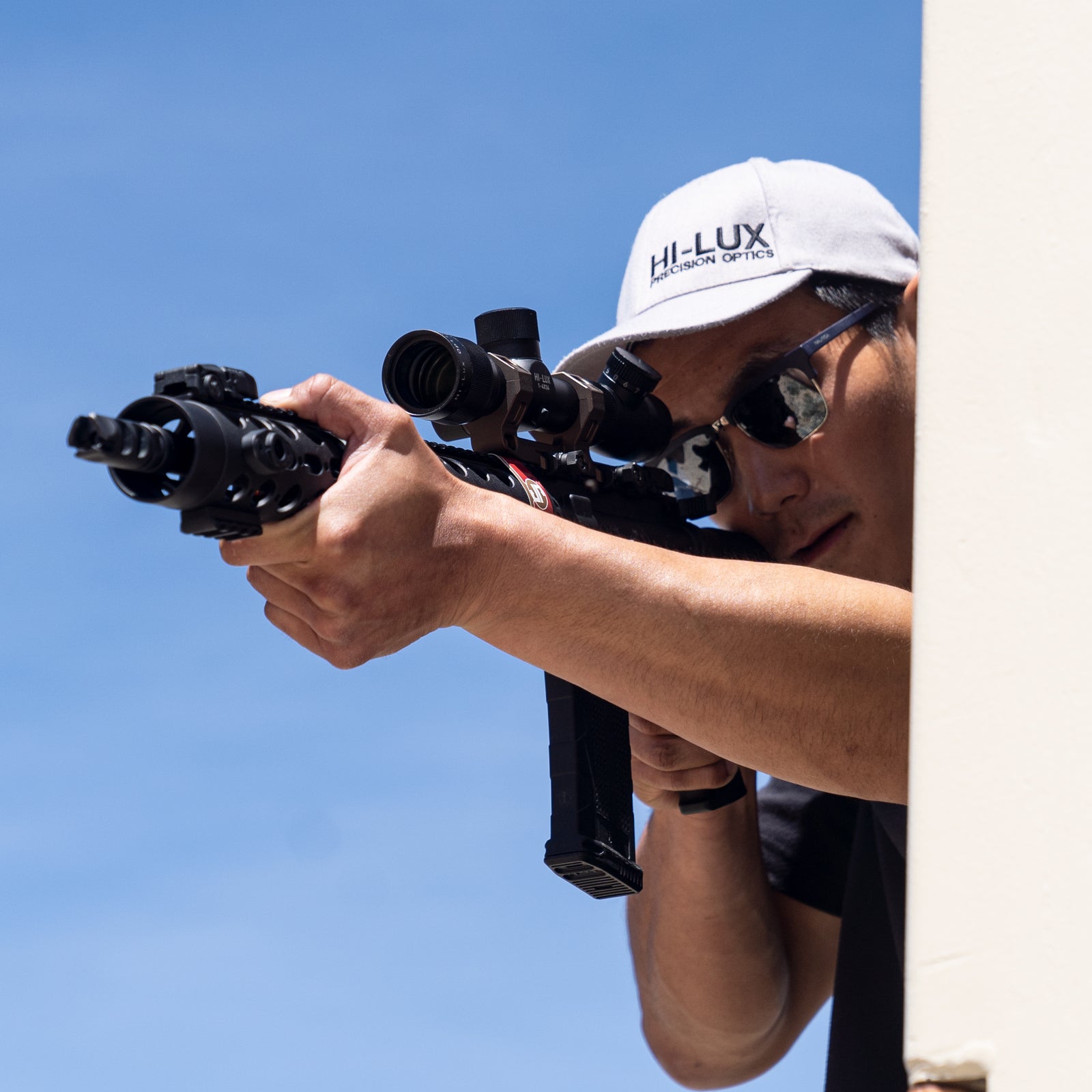
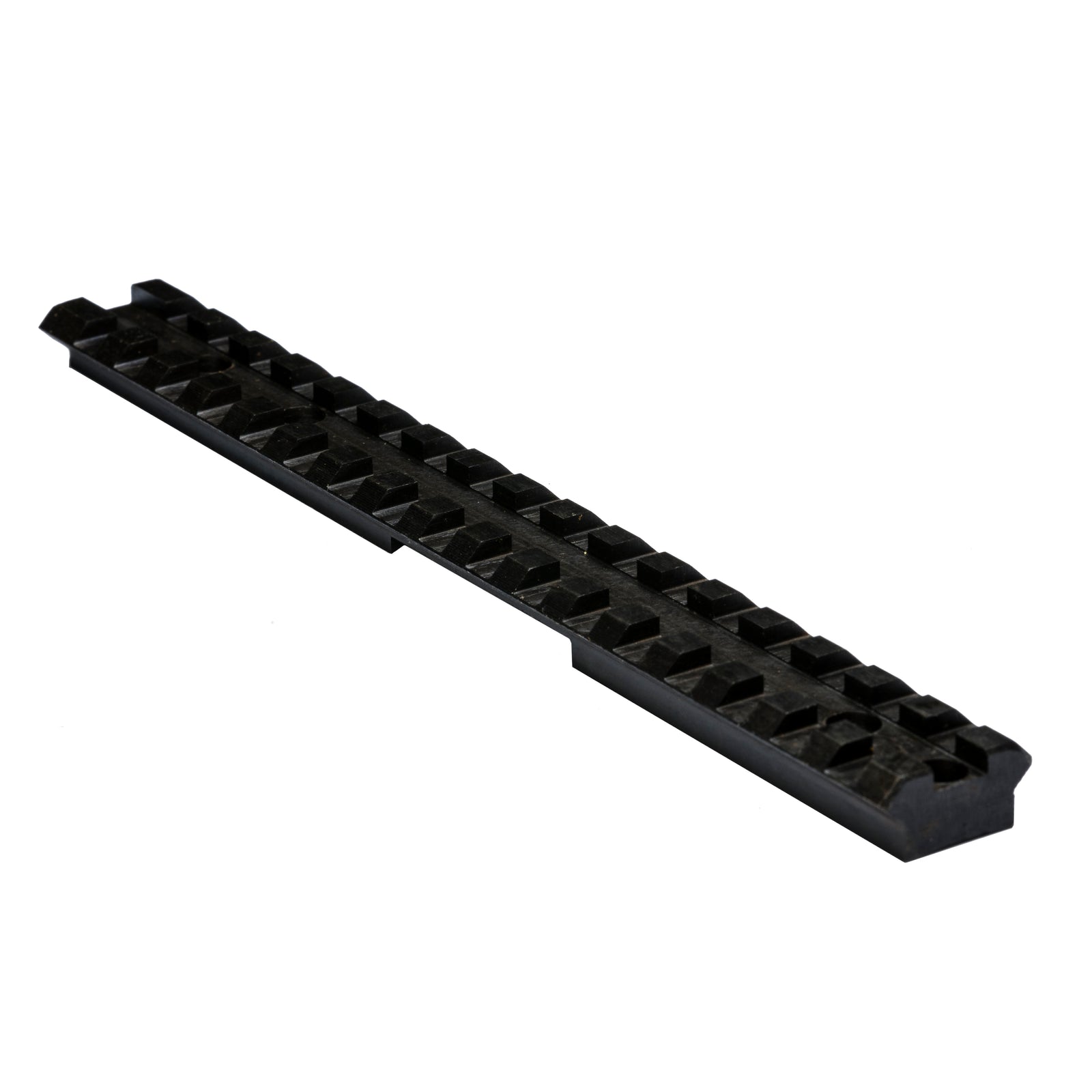
Leave a comment (all fields required)